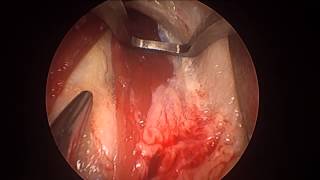Cubital Tunnel Syndrome
- Patients with cubital tunnel syndrome experience numbness and tingling in the ring and small fingers of their hand. You may also experience weakness and loss of dexterity. Occasionally you will also have discomfort and a "funny-bone" sensation in your inner elbow.
- Cubital tunnel syndrome is caused by a pinched nerve on the inside of the elbow. The ulnar nerve is the size of a soda straw and travels through a tight space on the inside of the elbow. Common causes of nerve compression include long car rides with the elbow bent and resting on an arm rest, sleeping on your side with the elbow in a bent postion and prior injury to the elbow.
- Dr. Rubin can usually diagnose cubital tunnel syndrome after listening to your complaints and examining your arm and hand. X-rays and MRI are occasionally performed in some cases. Nerve testing (called EMGs) are usually obtained and performed by a neurologist to confirm the diagnosis.
- Mild symptoms can usually be treated with activity modification and posture avoidance. A cubital tunnel brace can be worn at night for sleep. Symptoms that have been ongoing for many months can require surgery to release the nerve on the inside of the elbow.
- The success of surgery depends on many factors including how long symptoms have been present, how severe the nerve is damaged and other factors such as diabetes and other medical conditions.
- Dr. Rubin performs several different procedures for cubital syndrome. He performs endoscopic cubital tunnel release that is done through a small incision on the inner elbow with less pain, quicker healing and ealier return to sports and activities of daily living. Click on the image below to view a video of an actual endoscopic cubital tunnel release.
- We encourage our patients to be as active as possible during their treatment because active patients recover more quickly. Dr. Rubin will help determine which activities are safe and beneficial to your recovery. Do not undertake strenuous activities without first consulting your physician.

